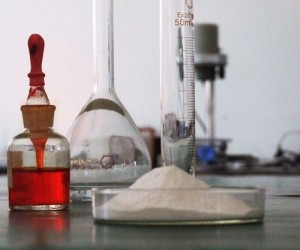HydroxyPropyl MethylCellulose (HPMC) physical property
Hydroxy propyl methyl cellulose is produced from highly pure cotton cellulose by special etherification in alkaline conditions. The whole process is completed under automatic monitor control and contains no active constituents, such as animal organs and grease. The product is non-ionic cellulose ether, in the shape of white powder, odorless and tasteless.
English Name: Hydroxy Propyl Methyl Cellulose
Alias:
HPMC; (2R,3R,4S,5R,6S)-3,4,5-trimethoxy-2-(methoxymethyl)-6-[(2R,3R,4S,5R,6R)-4,5,6-trimethoxy-2-(methoxymethyl)tetrahydropyran-3-yl]oxy-tetrahydropyran; 1-[[(2R,3R,4S,5R,6S)-3,4,5-tris(2-hydroxypropoxy)-6-[(2R,3R,4S,5R,6R)-4,5,6-tris(2-hydroxypropoxy)-2-(2-hydroxypropoxymethyl)tetrahydropyran-3-yl]oxy-tetrahydropyran-2-yl]methoxy]propan-2-ol
CAS Number: 9004-65-3
Molecular Formula: C56H108O30
Molecular Weight: 1261.4387
1. Appearance: white or off-white powder
2. Granularity: The passing rate of 100 mesh is over 98.5% and that of 80 mesh is 100%. The particle size of particular specification is 40-60 mesh.
3. Carbonization Temperature: 280-300℃
4. Density: 0.25-0.70g/cm (usually about 0.5g/c), and the relative density is 1.26-1.31.
5. Discoloration Temperature: 190-200℃
6. Surface Tension: 42-56 dyn/cm for 2% aqueous solution
7. Solubility
The product is soluble in water and part of solvents such as alcohol-water and propyl alcohol-water solvents in an appropriate proportion. The aqueous solution owns surface activity, high transparency and stable properties. Products of different specifications have different gelation temperatures and the solubility changes with the viscosity. The lower the viscosity is, the higher the solubility will be. HydroxyPropyl MethylCellulose products with different specifications also have difference in properties and the dissolution of HydroxyPropyl MethylCellulose in water won’t get affected by the pH value.
8. As the methoxyl content decreases, the gel point of HydroxyPropyl MethylCellulose rises; the water solubility decreases and the surface activity will accordingly reduce.
9. Besides, HydroxyPropyl MethylCellulose has thickening capacity, salt tolerance, low ash content, pH stability, water-retaining property, dimensional stability, excellent film-forming ability, extensive resistance to enzymes, dispersibility and cohesiveness.
Synthetic Method
Get the purified cotton cellulose disposed in alkaline liquor at 35-40℃ for half an hour, then squeezed and smashed. At the temperature of 35℃, aging treatment is properly carried out in order to make the average degree of polymerization of alkaline fiber obtained within the required range. Put the alkaline fiber into etherification kettle and add propylene epoxide and methyl chloride in turn. Afterwards, get it etherified for 5h at the temperature of 50-80℃and the maximum pressure is about 1.8Mpa. Then, add an appropriate amount of hydrochloric acid and oxalic acid washing materials into the hot water of 90℃ to make the volume expand. It can be dehydrated by centrifuge. When it is washed to neutral and the water content in materials is below 60%, it can be dried as low as 5% in water content by hot air flow of 130℃. Finally, the finished product can be sifted over 20 mesh smashing.
Health Hazard
The product is safe and non-toxic, can be used as food additives. HydroxyPropyl MethylCellulose has no calory and no stimulation to skin and mucosa. HydroxyPropyl MethylCellulose is generally recognized as safe (FDA1985) and the acceptable daily intake (ADI) is 25mg/kg (FAO/WHO 1985). In operation, one should wear protective equipment.
Environmental Impact
Avoid air pollution resulting from dust emissions by throwing at will.
Physical and Chemical Hazards
Avoid contact with fire source, the formation of plenty of dust in airtight environment, and explosive hazards

